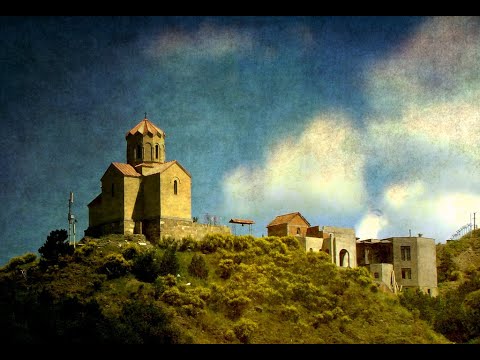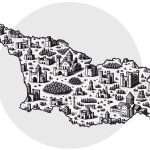Tabori Castle, also known as Korchi-Kala, is a testament to the feudal era in Tbilisi’s historic district. Located at the end of the Tabori ridge, right above the botanical garden, this fortress combines elements of a medieval stronghold and a modern church. Although only the ruins of the castle’s foundation remain today, Tabori Castle’s historical significance continues to resonate.
History
In the Heart of Tbilisi’s Landscape
Tabori Castle’s geographic and cultural significance becomes evident in Beridze’s writings. “Tbilisi, encircled by mountains with names rooted in pre-Christian and Christian traditions, shares a connection with Tafob,” Beridze notes. South of Tbilisi, on the Mtkvari River’s right bank, Mount Tabori, a part of the Trialeti mountain range, stands proudly. The mountain, named after the biblical Mount Tabor, signifies the site of Christ’s Transfiguration in Christian tradition.
Early Records and Reconstruction
Historical records first mention Tabori Castle in 1045, during King Bagrat IV’s capture of the city and fortress. In the 1630s, after Shah Abbas I of Persia’s destructive invasion in 1618, King Rostom led the castle and its church’s reconstruction. The castle re-emerged in records in 1723 when the Georgian army captured it under King Vakhtang of Kakheti and Mahmadikuli-Khan.
Repeated Destruction and Recapture
Persian forces repeatedly destroyed Tabori Castle in 1735 and 1743. By 1747, Tbilisi and its fortresses – Metekhi, Narikala, and Tabori – fell under Kizilbashi’s control. King Erekle of Kakheti, facing a heavily fortified enemy, had to transport a giant cannon from Gori to recapture the fortress. Despite fortifying it with walls and stationing the Kakhetian army, the fortress fell again to Aghamohammad-Khan’s forces due to betrayal.
Final Years and Present State
In the 1776 deed of mercy, officials called the fortress “Korchi-Kala,” meaning guard castle. A Russian official’s 1800 plan of Tbilisi marked the looted Korchi-Kala fortress on the Tabori ridge. A battle between Persians and Georgians in 1795 near Tbilisi led to the castle’s final destruction. Since Georgia’s union with Russia in 1801 and the diminished need for defensive fortresses in Tbilisi, no one has rebuilt Tabori Castle. Today, visitors can see only the remains of the castle’s foundation, a silent witness to a tumultuous past.





